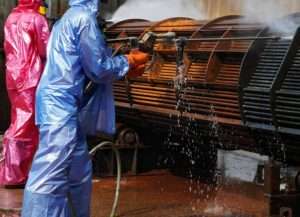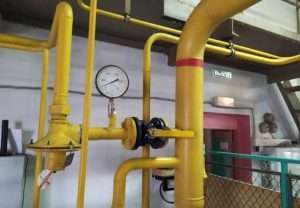Ипотечный калькулятор Уралсиб Банка: расчет ежемесячных платежей и сравнение программ
Рассчитайте ипотеку онлайн за минуту! Ипотечный калькулятор Уралсиб поможет сравнить предложения и выбрать лучшие условия. Быстро, удобно, надежно!
Выбор ипотеки – это ответственное решение, требующее тщательного анализа различных параметров. Правильный расчет ежемесячных платежей и общей суммы переплаты играет ключевую роль в принятии взвешенного решения. Именно поэтому использование ипотечного калькулятора становится незаменимым инструментом для потенциальных заемщиков. На странице https://www.uralsib.ru/ можно найти подробную информацию о предлагаемых ипотечных программах Уралсиб Банка, а также воспользоваться удобными онлайн-инструментами для расчета.
Как работает ипотечный калькулятор Уралсиб Банка?
Ипотечные калькуляторы, предлагаемые банками, включая Уралсиб, работают на основе ввода нескольких ключевых параметров. Эти параметры позволяют рассчитать приблизительную сумму ежемесячного платежа и общую стоимость кредита. Обычно требуется указать желаемую сумму кредита, процентную ставку, срок кредитования, а также тип платежей (аннуитетный или дифференцированный). В результате вы получите детальный расчет, включающий график платежей и сумму переплаты.
Основные параметры для расчета
- Сумма кредита⁚ Это желаемая сумма, которую вы планируете занять у банка для приобретения недвижимости.
- Процентная ставка⁚ Это процент, который банк начисляет на заемные средства. Он может меняться в зависимости от выбранной программы и вашей кредитной истории.
- Срок кредитования⁚ Это период времени, в течение которого вы обязуетесь погасить кредит. Срок может варьироваться от нескольких лет до нескольких десятилетий.
- Тип платежа⁚ Вы можете выбрать аннуитетный платеж (равные платежи на протяжении всего срока кредита) или дифференцированный платеж (платежи уменьшаются с каждым месяцем).
- Первоначальный взнос⁚ Это сумма денег, которую вы вносите из собственных средств в качестве первого платежа за недвижимость. Размер первоначального взноса влияет на сумму кредита и процентную ставку.
Преимущества использования онлайн-калькулятора
Использование онлайн-калькулятора предоставляет ряд неоспоримых преимуществ. Во-первых, это экономит время и усилия, позволяя быстро получить предварительные расчеты без необходимости посещения банка. Во-вторых, он обеспечивает прозрачность и наглядность расчетов, позволяя сравнивать различные сценарии и выбирать наиболее выгодные условия. В-третьих, он позволяет экспериментировать с разными параметрами, чтобы понять, как они влияют на конечный результат. Например, вы можете увидеть, как изменится ваш ежемесячный платеж при увеличении срока кредитования или изменении размера первоначального взноса.
Сравнение различных ипотечных программ
Ипотечный калькулятор Уралсиб Банка, как и калькуляторы других банков, позволяет сравнивать различные ипотечные программы. Вы можете ввести параметры для разных программ и увидеть, какая из них окажется наиболее выгодной для вас с учетом ваших финансовых возможностей и потребностей. Это особенно полезно, если банк предлагает несколько вариантов ипотечных кредитов с разными условиями.
Важные факторы, влияющие на процентную ставку
Процентная ставка по ипотеке – один из ключевых факторов, определяющих общую стоимость кредита. На нее влияет множество факторов, включая вашу кредитную историю, размер первоначального взноса, срок кредитования и выбранную программу. Хорошая кредитная история, большой первоначальный взнос и более короткий срок кредитования обычно приводят к снижению процентной ставки.
Как улучшить свою кредитную историю
Если вы хотите получить более низкую процентную ставку по ипотеке, стоит позаботиться о своей кредитной истории. Это можно сделать, своевременно оплачивая все свои кредиты и счета, избегая просрочек и не создавая чрезмерную кредитную нагрузку. Регулярно проверяйте свою кредитную историю и обращайтесь в бюро кредитных историй для исправления ошибок, если таковые имеются.
Дополнительные функции ипотечного калькулятора
Современные ипотечные калькуляторы часто предлагают дополнительные функции, которые упрощают процесс выбора ипотеки. Например, некоторые калькуляторы позволяют учитывать дополнительные расходы, такие как страхование, комиссии и государственные пошлины. Это позволяет получить более точный расчет общей стоимости кредита. В некоторых случаях калькуляторы также предоставляют график платежей, позволяющий увидеть, как будут меняться ваши платежи на протяжении всего срока кредита.
- График платежей⁚ Позволяет визуально оценить динамику платежей во времени.
- Учет дополнительных расходов⁚ Включает в расчет страхование, комиссии и другие сборы.
- Сравнение программ⁚ Позволяет одновременно сравнить несколько ипотечных программ.
- Возможность сохранения результатов⁚ Позволяет сохранить расчеты для дальнейшего использования.
Не забывайте, что результаты, полученные с помощью ипотечного калькулятора, являются лишь приблизительными. Для получения точной информации о стоимости кредита и условиях его предоставления необходимо обратиться в Уралсиб Банк или другого кредитора. На странице https://www.uralsib.ru/ можно найти контактную информацию и получить консультацию специалиста.
Выбор подходящей ипотечной программы – это сложный процесс, требующий тщательного анализа и учета множества факторов. Использование ипотечного калькулятора Уралсиб Банка значительно упрощает этот процесс, позволяя быстро и эффективно оценить свои возможности и выбрать оптимальный вариант кредитования. Понимание принципов работы калькулятора и учет всех важных параметров позволит вам принять взвешенное решение и избежать непредвиденных финансовых трудностей. Внимательно изучите все условия кредитования перед тем, как подавать заявку. Не забывайте, что своевременная и полная информация, залог успешного выбора ипотеки. Правильное использование ипотечного калькулятора, это первый шаг к вашей мечте о собственном жилье. На странице https://www.uralsib.ru/ вы найдете все необходимые инструменты для принятия обоснованного решения.
Описание⁚ Полное руководство по использованию ипотечного калькулятора Уралсиб Банка. Узнайте, как рассчитать платежи и выбрать лучшую программу.






